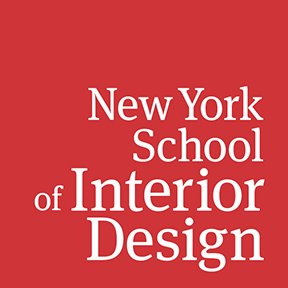The Persistence of Hand Drawing: Interior Rendering Today Exhibition
Park Avenue Apartment, Peter Pennoyer, watercolorist Genevieve Irwin
Today, when computer imagery is ubiquitous, there remain a number of contemporary architects and designers who persist in drawing interiors by hand. Their drawings enhance the designers’ powers of observation. They promote the understanding of scale and proportion.
This exhibition at New York School of Interior Design, from September 19, 2024 to April 3, 2025, focuses on hand drawings by 12 established and emerging New York-based architects and interior designers. Drawings and design portfolios from the New York School of Interior Design Archives provide context for this contemporary work.
Design historians and curators Donald Albrecht and Thomas Mellins draw on their own experience witnessing the rise of CAD and the demise of hand rendering, to highlight this ongoing practice that reminds us of both the artisanry and ideation that the nearly wholesale adoption of CAD by the design industry has marginalized.
Hand renderings exert an impact on the client or viewer. Distinct from other types of interior design drawings—plans, sections, and linear elevations—renderings emphasize the depiction of three-dimensional form and space, often using color and depicting the effects of light.
More romantic than computer-generated images, hand renderings offer an opportunity to imagine oneself within the depicted interior by, in a sense, filling in the blanks. Renderings thus become powerful tools of persuasion used to promote designers’ ideas to clients, patrons, and the press. As such, renderings often serve as an indispensable step in the journey from concept to reality. At their best, renderings accomplish a magical sleight of hand, far surpassing mere visual documentation. Renderings, at once accurate and expressive, allow the viewer to convincingly imagine a world that does not yet exist.
The architects and designers featured in the exhibition include:
Residential Foyer
Mita Corsini Bland is an interior renderer who often works directly with restaurant and hotel developers. She has illustrated a monograph on the work of Sister Parish and sees the work of Jeremiah Goodman as an inspiration. Bland’s watercolors stress the play of light.
Pool Pavilion for architect’s house in Rancho Santa Fe, California
William Georgis of Georgis & Mirgorodsky
Architect William Georgis’s work has included residences throughout the United States and the Caribbean as well as such high-profile commercial spaces at The Grill and The Pool restaurants in the Seagram Building. The firm has also designed a line of furniture for Maison Gerard New York.
Carroll Street Kitchen
Interior designer and artist Leyden Lewis is a founding member of the Black Artists + Designers Guild. He is on the faculty of the New York School of Interior Design and has exhibited his work at the Studio Museum of Harlem and New York University.
Park Avenue Apartment , Watercolorist Genevieve Irwin
Peter Pennoyer is a traditionalist architect who, though known primarily for his residences, has pursued a broad spectrum of projects including the new clock at New York’s Moynihan Train Hall. Members of his firm render interior spaces and furnishings in a style reminiscent of the Beaux Arts.
House in Rhode Island
Douglas Wright has made drawing a central focus of his architectural practice. Skill in drawing is a prerequisite for members of his firm who regularly meet for group drawing sessions. The firm designs residences, institutions, and commercial spaces in a traditional vein.
Artist and architect Marshall Brown sketches on tracing paper, draws on drafting vellum, and assembles photo-collages to depict projects both real and visionary. He is often inspired by the work of Frank Gehry, Peter Eisenman, and Zaha Hadid.
John and Christine Gachot are the founding principals of their eponymous firm specializing in interior design, real estate development, and art direction. Their spare, elegant drawings reflect the clean lines and minimalist palette of their design work.
Architect Elizabeth Graziolo and the members of her firm, Yellow House, use pencil and ink drawings to launch many projects including residences and apartment building lobbies. Graziolo was previously a partner at Peter Pennoyer Architects.
Architect Wendy Evans Joseph has specialized in designing museum exhibitions for the Museum of the City of New York, the Solomon R. Guggenheim Museum, Richmond’s Valentine Museum, and other cultural institutions. Joseph is currently working on the main public spaces of the Library of Congress.
Hilary Sample and Michael Meredith/MOS
The members of MOS Architects utilize a variety of rendering techniques including freehand sketching, collage, and work in which they draw directly on computer-generated images. Additionally, the firm has produced a series of limited-edition books on conceptual architecture.
Gil Schafer with David Netto
Architect Gil Schafer, founder of the firm Schafer Buccellato,, documents the interiors of his buildings through collaboration with Los Angeles-based David Netto. Schafer produces floorplans and sectional drawings, while Netto provides accompanying hand sketches depicting furniture, decorative objects, furnishings, and art works.
Architect Nina Cooke John, who teaches at the Parsons School of Design and Columbia University, is the founding principal of a multi-disciplinary design firm which focuses on residential work as well as public sculpture projects.
About the Curators
Thomas Mellins has written extensively about New York City’s architecture and urbanism. He also has curated exhibitions for such cultural institutions as the New York Public Library and Lincoln Center for the Performing Arts. Donald Albrecht creates exhibitions, books, and essays, often for public institutions, that explore a wide range of topics from broad overviews of cultural trends to in-depth profiles of visual and performing artists.





